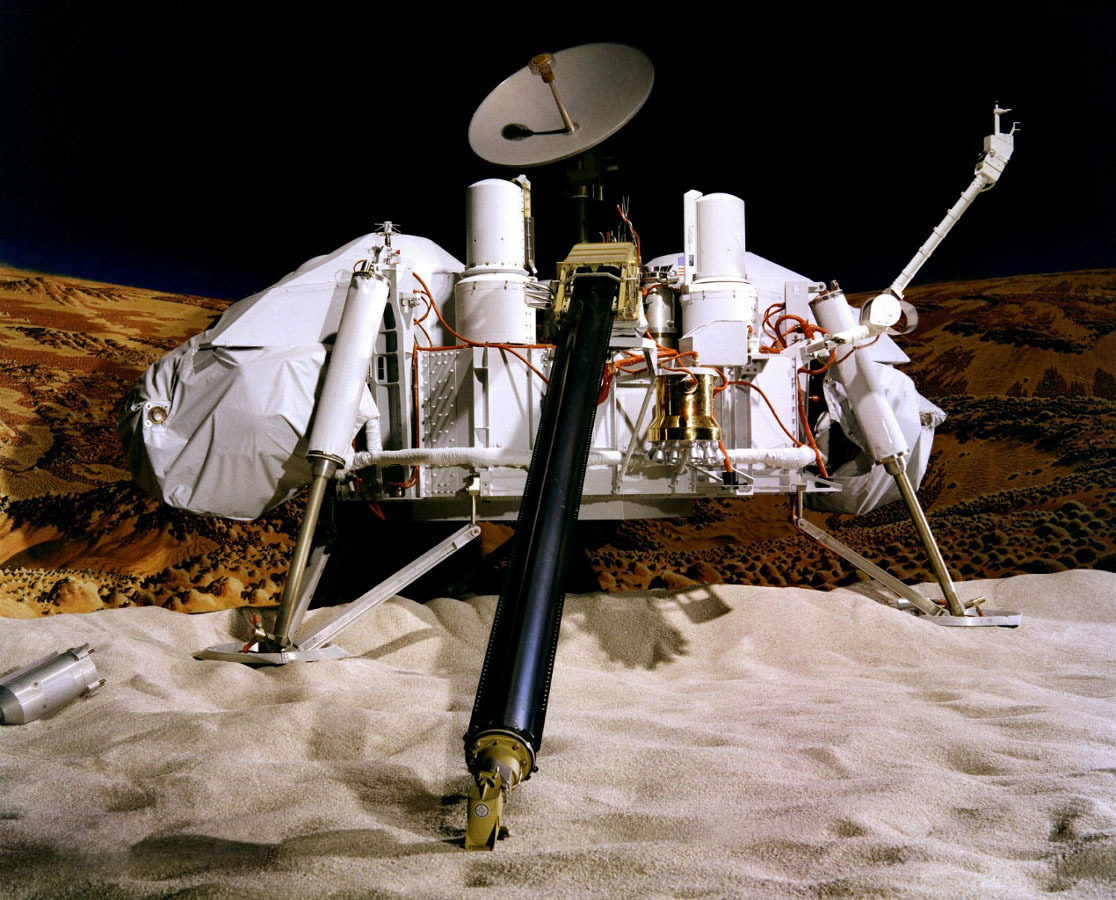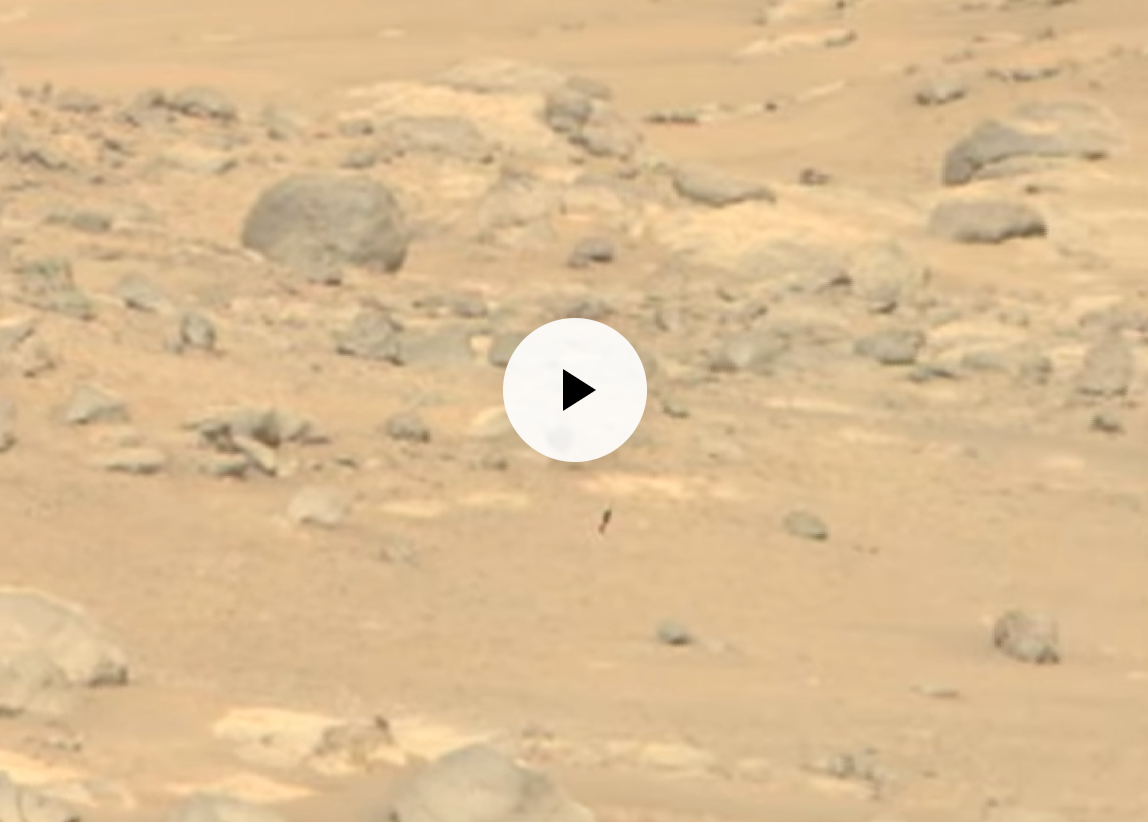You are using an out of date browser. It may not display this or other websites correctly.
You should upgrade or use an alternative browser.
You should upgrade or use an alternative browser.
pigfarmer
tall, thin, irritable
Unreality check. Little bitty helicopters on Mars indeed. Remember these?
Viking 1 & 2 | Missions – NASA’s Mars Exploration Program
Mars Exploration Section Missions
Viking 1 & 2

NASA's Viking Project found a place in history when it became the first U.S. mission to land a spacecraft safely on the surface of Mars and return images of the surface. Two identical spacecraft, each consisting of a lander and an orbiter, were built. Each orbiter-lander pair flew together and entered Mars orbit; the landers then separated and descended to the planet's surface.
The Viking 1 lander touched down on the western slope of Chryse Planitia (the Plains of Gold), while the Viking 2 lander settled down at Utopia Planitia.
Besides taking photographs and collecting other science data on the Martian surface, the two landers conducted three biology experiments designed to look for possible signs of life. These experiments discovered unexpected and enigmatic chemical activity in the Martian soil, but provided no clear evidence for the presence of living microorganisms in soil near the landing sites. According to scientists, Mars is self-sterilizing. They believe the combination of solar ultraviolet radiation that saturates the surface, the extreme dryness of the soil and the oxidizing nature of the soil chemistry prevent the formation of living organisms in the Martian soil.
The Viking mission was planned to continue for 90 days after landing. Each orbiter and lander operated far beyond its design lifetime. Viking Orbiter 1 continued for four years and 1,489 orbits of Mars, concluding its mission August 7, 1980, while Viking Orbiter 2 functioned until July 25, 1978. Because of the variations in available sunlight, both landers were powered by radioisotope thermoelectric generators -- devices that create electricity from heat given off by the natural decay of plutonium. That power source allowed long-term science investigations that otherwise would not have been possible. Viking Lander 1 made its final transmission to Earth November 11, 1982. The last data from Viking Lander 2 arrived at Earth on April 11, 1980.
Viking 1 & 2
MISSION TYPE
Orbiter & Lander pairs
LAUNCH VEHICLE
Titan IIIE/Centaur
LAUNCH LOCATION
Cape Canaveral Air Force Station, Florida
Viking 1 Orbiter & Lander
LAUNCH
August 20, 1975 UTC
ORBIT INSERTION
June 19, 1976
ORBITER END OF MISSION
August 17, 1980
LANDING
July 20, 1976
LANDING SITE
Chryse Planitia ("Golden Plain")
LANDER END OF MISSION
November 13, 1982
Viking 2 Orbiter & Lander
LAUNCH
September 9, 1975 UTC
ORBIT INSERTION
August 7, 1976
ORBITER END OF MISSION
July 25, 1978
LANDING
September 3, 1976
LANDING SITE
Utopia Planitia, Mars
LANDER END OF MISSION
April 11, 1980
Viking 1 & 2 | Missions – NASA’s Mars Exploration Program
Mars Exploration Section Missions
Viking 1 & 2

NASA's Viking Project found a place in history when it became the first U.S. mission to land a spacecraft safely on the surface of Mars and return images of the surface. Two identical spacecraft, each consisting of a lander and an orbiter, were built. Each orbiter-lander pair flew together and entered Mars orbit; the landers then separated and descended to the planet's surface.
The Viking 1 lander touched down on the western slope of Chryse Planitia (the Plains of Gold), while the Viking 2 lander settled down at Utopia Planitia.
Besides taking photographs and collecting other science data on the Martian surface, the two landers conducted three biology experiments designed to look for possible signs of life. These experiments discovered unexpected and enigmatic chemical activity in the Martian soil, but provided no clear evidence for the presence of living microorganisms in soil near the landing sites. According to scientists, Mars is self-sterilizing. They believe the combination of solar ultraviolet radiation that saturates the surface, the extreme dryness of the soil and the oxidizing nature of the soil chemistry prevent the formation of living organisms in the Martian soil.
The Viking mission was planned to continue for 90 days after landing. Each orbiter and lander operated far beyond its design lifetime. Viking Orbiter 1 continued for four years and 1,489 orbits of Mars, concluding its mission August 7, 1980, while Viking Orbiter 2 functioned until July 25, 1978. Because of the variations in available sunlight, both landers were powered by radioisotope thermoelectric generators -- devices that create electricity from heat given off by the natural decay of plutonium. That power source allowed long-term science investigations that otherwise would not have been possible. Viking Lander 1 made its final transmission to Earth November 11, 1982. The last data from Viking Lander 2 arrived at Earth on April 11, 1980.
Viking 1 & 2
MISSION TYPE
Orbiter & Lander pairs
LAUNCH VEHICLE
Titan IIIE/Centaur
LAUNCH LOCATION
Cape Canaveral Air Force Station, Florida
Viking 1 Orbiter & Lander
LAUNCH
August 20, 1975 UTC
ORBIT INSERTION
June 19, 1976
ORBITER END OF MISSION
August 17, 1980
LANDING
July 20, 1976
LANDING SITE
Chryse Planitia ("Golden Plain")
LANDER END OF MISSION
November 13, 1982
Viking 2 Orbiter & Lander
LAUNCH
September 9, 1975 UTC
ORBIT INSERTION
August 7, 1976
ORBITER END OF MISSION
July 25, 1978
LANDING
September 3, 1976
LANDING SITE
Utopia Planitia, Mars
LANDER END OF MISSION
April 11, 1980
nivek
As Above So Below
That sure does look like fungus growing onvthe ground and on the rover...
...





